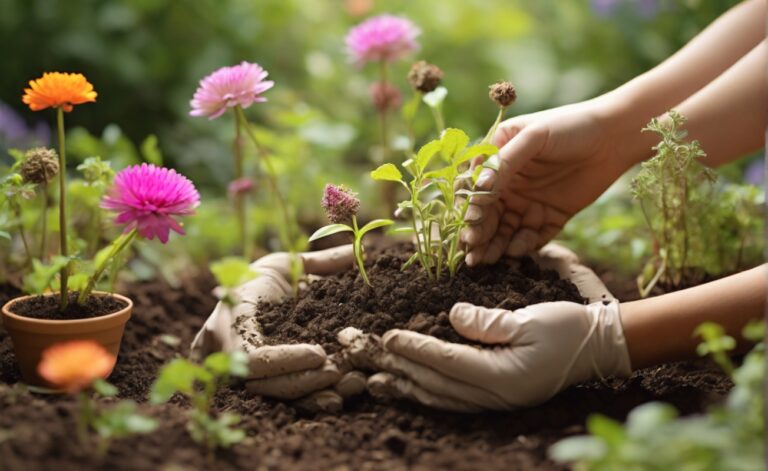Unlocking Inner Stability and Strength: 7 Effective Methods
“Stay centered,” they say. In the past, this phrase might have spelled trouble. However, in today’s turbulent world, maintaining inner stability is a virtue. In a society grappling with an ongoing pandemic, extreme weather crises, mask and vaccine polarization, and the relentless grind of everyday life, achieving inner stability and strength is a noble pursuit.
If you wants to know more info : you can practice Unlocking Receptivity: 6 Pathways to Unleash Personal Growth
1. Breathe Intentionally for Well-being
Scientific research champions the power of deliberate, unhurried breaths. This practice, available at your fingertips, demands your full attention. Inhale gently through your nostrils, then exhale even slower via your mouth, ideally inhaled for four counts and exhaled for six to eight counts.
2. Earthly Connection: Go Barefoot
Kick off your shoes and take a mindful stroll on grass, sand, or soil. Engage your senses. Feel the earth’s texture and temperature. Let your muscles guide your steps. Studies unveil the remarkable pain relief and mood enhancement that come with grounding.
3. Self-Soothing: A Caress for Calmness
The Mindful Self-Compassion course introduces soothing touch to activate the parasympathetic nervous system, a soothing balm for the agitated soul. Place your hand upon your heart, tuned to your own pulse. Sense the gentle patting or circular chest rub. Extend this self-care ritual to various body parts: cup your cheek, offer a tender embrace to your abdomen, or simply hold your hands.
4. Earth’s Embrace: Lie Down
Select a safe spot on the earth, grass or sand, and recline, optionally shutting your eyes. Connect with the ground, starting at your head and journeying to your toes. Gently explore each body part, judgment-free. Open your eyes and embrace the sky, the breeze, and the sun’s warm caress.
5. Savor Each Bite: Mindful Eating
When was the last time you genuinely savored your meal? Mindful eating ushers you into the present moment, enhancing the pleasure of every morsel. Suspend all distractions. Take a moment to admire the colors and textures of your meal, breathe in its aroma, and relish its taste. Notice how your tongue orchestrates the food’s movement. Swallow and pause before your next indulgence.
6. Emotional Freedom: Tapping Technique
Commonly known as EFT (Emotional Freedom Technique), this gentle tapping on specific acupressure points across your head, face, and torso can ease anxiety and alleviate post-traumatic stress. Empower yourself with this self-administered technique, a divergence from acupuncture.
7. Cultivate Serenity: Gardening
If you believe gardening’s rewards are limited to fresh produce or fragrant blooms, think again. A 2017 meta-analysis reveals that gardening reduces anxiety and depression, trims body mass index, and elevates life satisfaction. Even if you’re in an apartment, you can hunt for community garden plots or help friends with their gardens.
Incorporate these practices into your daily life to unearth inner strength and unshakable stability. Ground yourself, not in turmoil, but in resolute well-being.
Conclusion: Anchoring Inner Stability in Turbulent Times
In these tumultuous times, finding inner stability and strength is not merely a luxury but a necessity. The seven methods presented here are pathways to grounding yourself in the present, enabling you to navigate life’s uncertainties with grace and resilience. From intentional breathing to mindful eating and nurturing a connection with the earth, these practices offer solace and strength.
Embrace them as tools to combat the chaos and uncertainty that surround us. Committing to regular engagement with these methods can lead to profound shifts in your well-being. As you weave them into your daily life, you may find yourself standing firm, like a tree anchored in the earth, unswayed by life’s storms.
FAQ: Answering Your Queries on Inner Stability
Q1: Can I practice these techniques simultaneously for better results?
A1: Absolutely! Combining these methods can amplify their effectiveness. For instance, practice mindful breathing while walking barefoot on the grass to experience a deep sense of calm and connection with the earth.
Q2: How long should I practice these techniques each day?
A2: The duration can vary depending on your schedule and needs. Start with a few minutes and gradually increase as you become more comfortable. The key is consistency, not duration.
Q3: What is the scientific basis for these methods?
A3: Numerous scientific studies support the effectiveness of these techniques in reducing stress, anxiety, and enhancing overall well-being. These practices activate the parasympathetic nervous system, promoting relaxation and emotional balance.
Q4: Can these methods help with specific conditions like anxiety or depression?
A4: Yes, these techniques can be valuable tools in managing anxiety and depression. However, they are not substitutes for professional medical or psychological treatment. Consult a healthcare provider for tailored advice if you have a mental health condition.
Q5: Can I involve my family and friends in these practices?
A5: Sharing these methods with loved ones can be a wonderful way to strengthen your connections and support each other’s well-being. You can practice them together, fostering a sense of community and shared growth.
Q6: What if I live in a city without access to natural spaces?
A6: While urban environments present challenges, you can still practice many of these techniques. Seek out urban parks, rooftop gardens, or indoor potted plants for a touch of nature. For grounding, consider grounding mats or sheets designed to mimic the Earth’s natural energy.
Incorporate these methods into your life with an open heart and a curious mind. By consistently engaging with these practices, you can enhance your inner stability, cultivate resilience, and thrive amidst life’s uncertainties.





